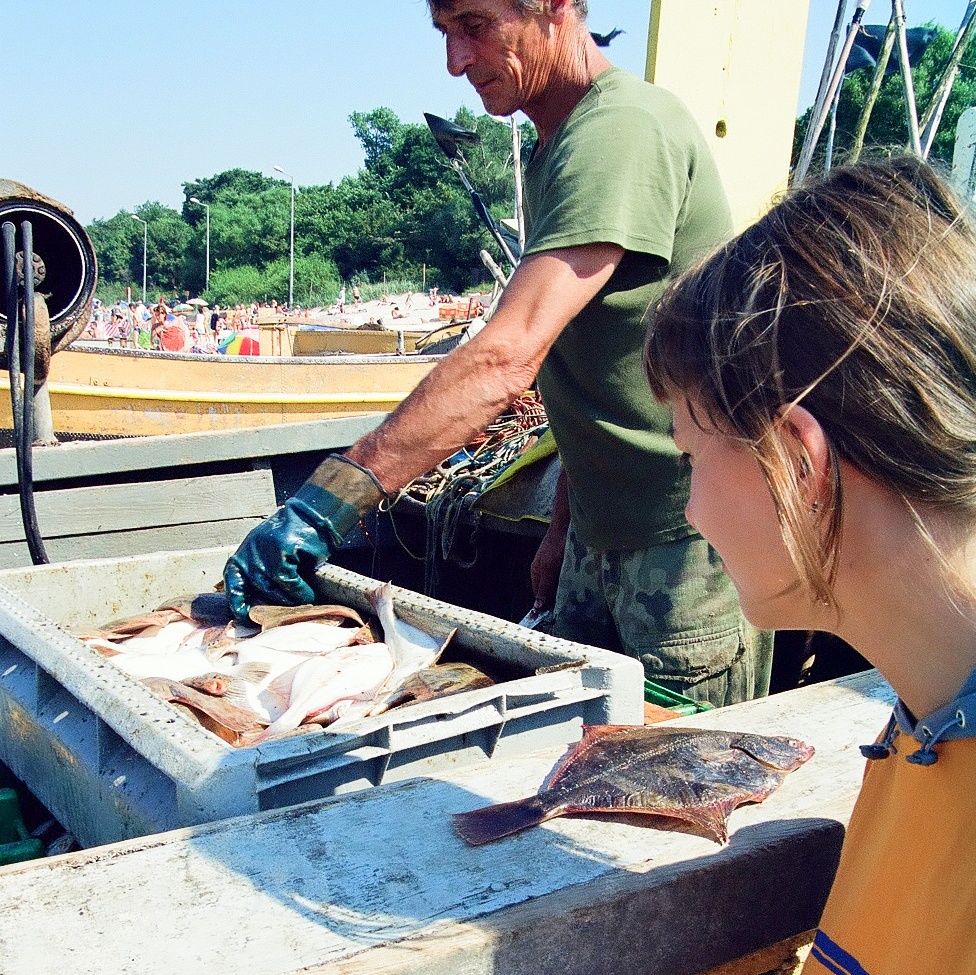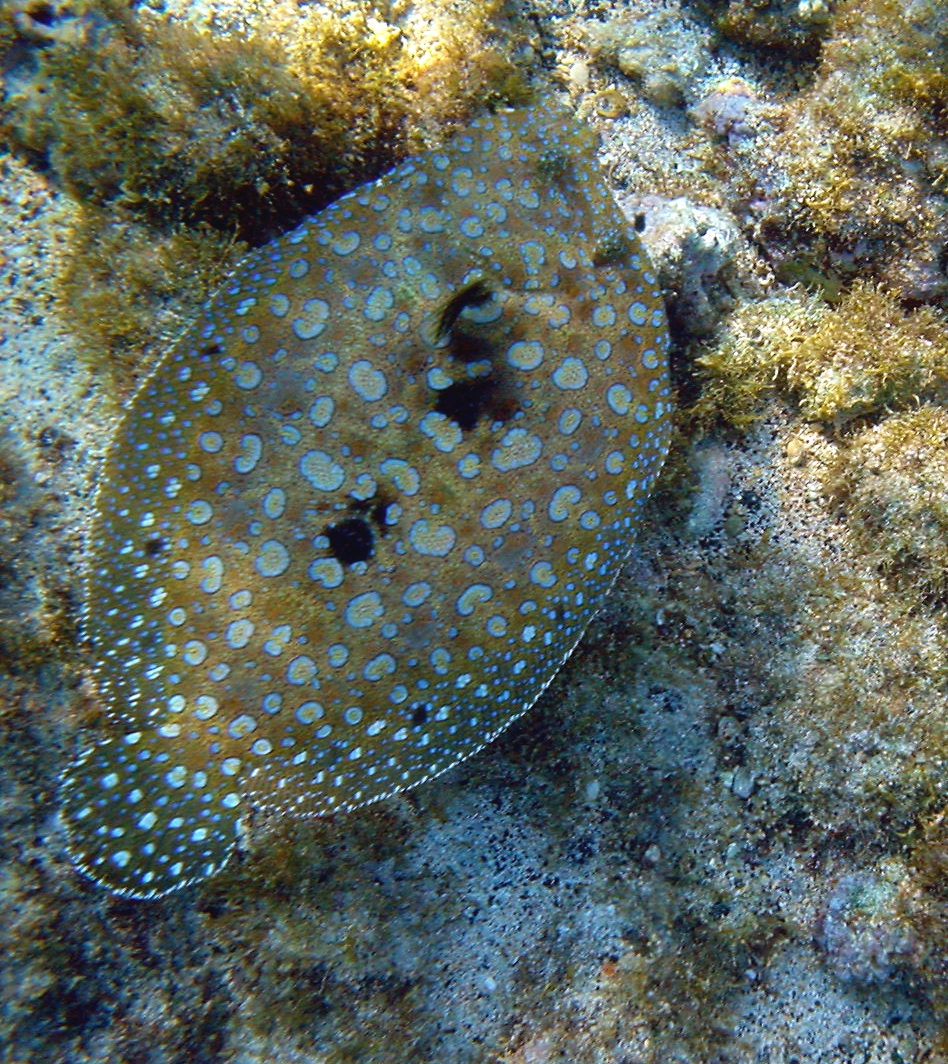|
Flounder
Flounders are a group of flatfish species. They are demersal fish, found at the bottom of oceans around the world; some species will also enter estuary, estuaries. Taxonomy The name "flounder" is used for several only distantly related species, though all are in the suborder Pleuronectoidei (families Achiropsettidae, Bothidae, Pleuronectidae, Paralichthyidae, and Samaridae). Some of the better known species that are important in fisheries are: * Western Atlantic ** Gulf flounder – ''Paralichthys albigutta'' ** Paralichthys lethostigma, Southern flounder – ''Paralichthys lethostigma'' ** Summer flounder (also known as ''fluke'') – ''Paralichthys dentatus'' ** Winter flounder – ''Pseudopleuronectes americanus'' * European waters **European flounder – ''Platichthys flesus'' **Witch (righteye flounder), Witch flounder – ''Glyptocephalus cynoglossus'' * North Pacific ** Halibut – ''Hippoglossus stenolepis'' ** Olive flounder – ''Paralichthys olivaceus'' Eye migrat ... [...More Info...] [...Related Items...] OR: [Wikipedia] [Google] [Baidu] [Amazon] |
Paralichthys Lethostigma
''Paralichthys lethostigma'', the southern flounder, is a species of large-tooth flounder native to the East Coast of the United States and the northern Gulf of Mexico. It is a popular sport fish and is the largest and most commercially valuable flounder in the western North Atlantic Ocean and Gulf of Mexico. It is a "left-eyed flounder", meaning the left side is pigmented and is the "up side". Description The body color is brown with diffuse, unocellated spots and blotches. This species typically grows to around in length. Diet Larval and postlarval southern flounder feed on zooplankton. As a juvenile, the southern flounder's diet consists of small invertebrates, shifting to larger invertebrates and fish as the flounder reaches adult size. Southern flounder feed on the bottom of the ocean and in the water column, and are considered to be near-top predators in their benthic environment. Habitat Adult fish breed and spend the warmer season in coastal embayments and nearsh ... [...More Info...] [...Related Items...] OR: [Wikipedia] [Google] [Baidu] [Amazon] |
Winter Flounder
The winter flounder (''Pseudopleuronectes americanus''), also known as the black back, is a right-eyed ("Sinistral and dextral, dextral") flatfish of the family Pleuronectidae. It is native to coastal waters of the western north Atlantic Ocean, Atlantic coast, from Labrador, Canada to Georgia (U.S. state), Georgia, United States, although it is less common south of Delaware Bay. It is the most common near-shore (shallow-water) flounder in the waters from Newfoundland down through Massachusetts Bay, reaching a maximum size around 61 cm in length and 2.25 kg in weight. The species grows larger on Georges Bank, where they can reach a length of 70 cm and weight of 3.6 kg. Although winter flounder historically supported large commercial and recreational fisheries, biomass and landings have decreased since the 1980s. Life cycle Winter flounder lay up to 3.3 million demersal, adhesive eggs that are retained within their spawning grounds. Depending on temperature, larv ... [...More Info...] [...Related Items...] OR: [Wikipedia] [Google] [Baidu] [Amazon] |
European Flounder
The European flounder (''Platichthys flesus'') is a flatfish of European coastal waters from the White Sea in the north to the Mediterranean and the Black Sea in the south. It has been introduced into the United States and Canada accidentally through transport in ballast water. It is caught and used for human consumption. The European flounder is oval in shape and is usually right-eyed. It normally grows about 30 cm in length, although lengths of up to 60 cm have been recorded. The upper surface is usually dull brown or olive in colour with reddish spots and brown blotches and this fish can change colour to suit its background, providing an effective camouflage. The underside is pearly-white, giving the fish one of its common names, the white fluke. The lateral line features rows of small tubercles, as do the bases of the dorsal and anal fins. Description The European flounder is a flatfish with an oval-shaped body with a width about half its length. The maximum recor ... [...More Info...] [...Related Items...] OR: [Wikipedia] [Google] [Baidu] [Amazon] |
Olive Flounder
The olive flounder (''Paralichthys olivaceus''), bastard halibut, Japanese flounder or Korean halibut is a temperate marine species of large-tooth flounder native to the North-western Pacific Ocean. It is the highest valued finfish in the world, known to be excellent for aquaculture due to a rapid growth rate and popularity in Japan and Korea. Names In Japanese, olive flounder is called ''hirame'' (ヒラメ). In Korean, it is called ''gwangeo'' (). In Chinese, it is called ''yaping'' (牙鮃) or ''biankouyu'' (扁口魚). In English, it is often referred to as "Japanese flounder" or "Korean flatfish" when mentioned in the context of those countries. Description It reaches a length of and a weight of . In 2017 its genome and transcriptome was sequenced as a model to study flatfish asymmetry. File:Paralichthys olivaceus Umigatari.jpg, Specimen at Joetsu Aquarium File:Hirame.jpg, Closeup of eyes Habitat and diet The olive flounder is often found in soft and muddy of ... [...More Info...] [...Related Items...] OR: [Wikipedia] [Google] [Baidu] [Amazon] |
Flounder Hawaii
Flounders are a group of flatfish species. They are demersal fish, found at the bottom of oceans around the world; some species will also enter estuaries. Taxonomy The name "flounder" is used for several only distantly related species, though all are in the suborder Pleuronectoidei (families Achiropsettidae, Bothidae, Pleuronectidae, Paralichthyidae, and Samaridae). Some of the better known species that are important in fisheries are: * Western Atlantic ** Gulf flounder – ''Paralichthys albigutta'' ** Southern flounder – ''Paralichthys lethostigma'' ** Summer flounder (also known as ''fluke'') – ''Paralichthys dentatus'' ** Winter flounder – ''Pseudopleuronectes americanus'' * European waters **European flounder – ''Platichthys flesus'' ** Witch flounder – ''Glyptocephalus cynoglossus'' * North Pacific ** Halibut – ''Hippoglossus stenolepis'' ** Olive flounder – ''Paralichthys olivaceus'' Eye migration Larval flounder are born with one eye on each side ... [...More Info...] [...Related Items...] OR: [Wikipedia] [Google] [Baidu] [Amazon] |
Summer Flounder
The summer flounder or fluke (''Paralichthys dentatus'') is a marine flatfish that is found in the Atlantic Ocean off the East Coast of the United States and Canada. It is especially abundant in waters from North Carolina to Massachusetts. Description ''Paralichthys dentatus'', also called a fluke, is a member of the large-tooth flounder family Paralichthyidae. There are typically 5 to 14 ocellated (eye-like) spots on the body. Like most members of the left-eye flounders, they can change the color and pattern of their dark side to match the surrounding bottom and are also capable of rapidly burrowing into muddy or sandy bottoms. The teeth are quite sharp and well developed on both upper and lower jaws. The average summer flounder reaches sexual maturity at 2 years and weighs 1 to 3 pounds, typically 15 to 20 inches in length, though they may grow as large as 26 pounds and live up to 20 years with females making up the largest and oldest specimens. Female flounders have a maximu ... [...More Info...] [...Related Items...] OR: [Wikipedia] [Google] [Baidu] [Amazon] |
Flatfish
A flatfish is a member of the Ray-finned fish, ray-finned demersal fish Order (biology), suborder Pleuronectoidei, also called the Heterosomata. In many species, both eyes lie on one side of the head, one or the other migrating through or around the head during development. Some species face their left sides upward, some face their right sides upward, and others face either side upward. The most primitive members of the group, the Threadfin, threadfins, do not resemble the flatfish but are their closest relatives. Many important food fish are in this order, including the flounders, sole (fish), soles, turbot, plaice, and halibut. Some flatfish can camouflage themselves on the ocean floor. Taxonomy Due to their highly distinctive morphology, flatfishes were previously treated as belonging to their own order, Pleuronectiformes. However, more recent taxonomic studies have found them to group within a diverse group of nektonic marine fishes known as the Carangiformes, which also inc ... [...More Info...] [...Related Items...] OR: [Wikipedia] [Google] [Baidu] [Amazon] |
Pleuronectoidei
A flatfish is a member of the ray-finned demersal fish suborder Pleuronectoidei, also called the Heterosomata. In many species, both eyes lie on one side of the head, one or the other migrating through or around the head during development. Some species face their left sides upward, some face their right sides upward, and others face either side upward. The most primitive members of the group, the threadfins, do not resemble the flatfish but are their closest relatives. Many important food fish are in this order, including the flounders, soles, turbot, plaice, and halibut. Some flatfish can camouflage themselves on the ocean floor. Taxonomy Due to their highly distinctive morphology, flatfishes were previously treated as belonging to their own order, Pleuronectiformes. However, more recent taxonomic studies have found them to group within a diverse group of nektonic marine fishes known as the Carangiformes, which also includes jacks and billfish. Specifically, flatfi ... [...More Info...] [...Related Items...] OR: [Wikipedia] [Google] [Baidu] [Amazon] |
Gulf Flounder
The Gulf flounder (''Paralichthys albigutta'') is a species of saltwater flounder. Description The Gulf flounder is a flatfish that swims on its side. Their two eyes look upward when swimming. They have sharp teeth, two eyes on their left side, and a white side opposite. ''Paralichthys albigutta'' is widely distributed in the Gulf of Mexico and a portion of the western North Atlantic. Adults are found in a variety of habitats, but generally prefer hard, sandy bottoms; juveniles settle in high salinity seagrass beds. Longevity is 7–10 years and females reach maturity between 1 and 2 years. It is commercially and recreationally exploited. The center of abundance of ''Paralichthys albigutta'' in the Gulf of Mexico is along its northeastern coast. West of the Mississippi River delta, it occurs in very low numbers. It appears to naturally occur in low abundance in seagrass beds. It is common in museum collections (660 lots). Many species of fishes, including ''P. albigutta'', have ex ... [...More Info...] [...Related Items...] OR: [Wikipedia] [Google] [Baidu] [Amazon] |
Witch (righteye Flounder)
The witch (''Glyptocephalus cynoglossus''), known in English by a variety of other common names including the witch flounder, pole flounder, craig fluke, Torbay sole, and grey sole, is a species of flatfish from the Family (biology), family Pleuronectidae. It occurs on both sides of the North Atlantic Ocean on muddy sea beds in quite deep water. In northern Europe it has some importance in fisheries as a food fish. Description The witch is a Pleuronectidae, right-eyed flatfish with a small mouth which reaches the forward edge of the lower eye. The mouth contains a single series of small, incisor like teeth. It has a small head which takes up a fifth of the total length with large, open blister-like mucous pits on its blind side Its body is strongly, dorsally compressed and oval in shape. The body is elongated and has a Fish measurement, standard length which is 2.5–3.5 times longer than it is broad. The lateral line is relatively straight and runs the length of its body with 110 ... [...More Info...] [...Related Items...] OR: [Wikipedia] [Google] [Baidu] [Amazon] |





